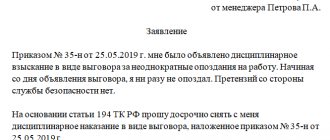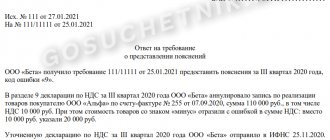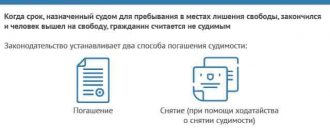If an employee has violated labor discipline or failed to fulfill obligations under the contract, the employer has the right to impose a disciplinary sanction. Namely: make a reprimand, reprimand or dismiss under clause 5 of part 1 of Art. 81 Labor Code of the Russian Federation.
After a reprimand or reprimand, the employer may deprive the employee of any additional payments and bonuses, if this is provided for by the collective agreement or other documents and acts.
How and in what cases can an employee appeal and remove a disciplinary sanction?
If you urgently need the help of a specialist to cancel a disciplinary sanction, call us or contact us via messenger.
In what cases can a disciplinary sanction be lifted?
To impose a disciplinary sanction, the employer is obliged to follow a certain procedure provided for in Art. 193 Labor Code of the Russian Federation. If not, the punishment can be appealed and cancelled.
What the employer must do:
- Demand an explanation. The employee must write an explanatory note within 2 days from the date of the request, or an act is drawn up stating that the employee refused to give an explanation.
- Conduct an internal investigation and draw up a report of violation of official duties.
- Issue an order stating that a specific penalty has been imposed on a specific employee.
- Familiarize the employee with the order against signature within 3 days from the day the order was issued.
Important! The employer himself decides what punishment to impose for which offense, depending on the severity and consequences of the violation. With the exception of dismissal, all grounds for which are specified in Article 81 of the Labor Code of the Russian Federation.
When an employee can get a disciplinary sanction reversed:
- If it's not his fault. For example, when an employer suffered losses due to a breakdown of equipment operated by an employee. Proving guilt falls on the employer.
- If he was not performing his duties , that is, work not provided for in his job description.
- The employer did not require a written explanation and/or did not draw up an act of refusal to provide an explanation.
- The employer violated the deadlines for applying penalties. An employee can be punished only within 1 month from the date of discovery and 6 months from the date of commission of the offense, but not later. If a violation is identified as a result of an audit, then no later than 2 years. Vacation and sick leave time is not taken into account.
- For one offense they were punished 2 or more times. For example, they gave me a reprimand and forfeited my bonus and immediately fired me.
Features of note design
The memo can be drawn up on a regular A4 sheet. It should contain this information:
- Company name.
- Full name of the originator and recipient.
- Request to remove the penalty.
- Details of the order on the basis of which the employee was punished.
- Grounds for early removal of foreclosure.
The document must bear the signature of the note writer. The latter is not an administrative document. Having considered it, the manager can make either a positive or negative decision.
Procedure for appealing and lifting disciplinary sanctions
An employee has several ways to protect his rights: appealing a disciplinary sanction to the Labor Dispute Commission (LCC), the prosecutor's office, the Labor Inspectorate and the district court.
The procedure for appealing a disciplinary sanction is arbitrary in the sense of which authorities to contact in what order. An employee can apply to all authorities at the same time, choose one or several.
Complaint to the CTS
An employee can contact the Trade Union to create a labor dispute commission (LCC) and consider the dispute. The CTS can either act constantly or gather situationally. The commission includes representatives of the employee and the employer in a quantitative ratio of 1:1.
The CCC will consider the situation within 10 days, after which a meeting is held with the participation of the employee, and a decision is made by secret ballot.
Consideration is allowed without an employee if he writes a corresponding application (Part 3 of Article 387 of the Labor Code of the Russian Federation).
After 3 days from the date of the meeting, the CCC issues the employee a copy of the decision. If the employee does not agree with him, he can go to court or authorized bodies to appeal the disciplinary sanction.
You can go to court without going to the CCC.
Complaint to the prosecutor's office
A complaint to the prosecutor's office is appropriate in cases where there is reason to believe that the violations committed by the employer contain signs of a crime.
You can write a complaint through State Services or the Prosecutor’s Office website.
Complaint to the labor inspectorate
A complaint to the labor inspectorate can be effective. The department may send an order to the employer to cancel the disciplinary sanction.
You can file a complaint with the Labor Inspectorate without leaving your home through the website Onlineinspektsiya.rf.
Drawing up a petition
For this document, as for any petition, there is no specific form. It is important to include the following information:
- in whose name it is written and from whom it comes;
- what is the essence of the issue (mention the name and position of the offender);
- what document previously determined the punishment;
- why there is a possibility of cancellation.
At the end of the document you need to sign, decipher and indicate the contacts of the person who compiled the document. Then register the document, make sure that the number and date of incoming correspondence are indicated.
Appealing a disciplinary sanction in court
To cancel a disciplinary sanction through the court, you can immediately file a claim without going anywhere first.
Labor disputes are heard by district courts. You need to go to the court of the locality where the employer’s company is located, where the employment contract is being executed, or where the employee himself lives.
The claim can be filed electronically on the website of a specific court, subject to technical capabilities.
It is important to draft the claim correctly, indicate the requirement with references to the law and attach sufficient evidence.
We will help you collect evidence, draw up a claim so that the dispute is resolved in your favor, and also return compensation that you were deprived of due to an unreasonable, illegal disciplinary sanction.
What can an employee be punished for?
Any sanctions are imposed on the employee for a disciplinary offense. There can be many options for such violations:
- non-compliance with work schedule (lateness, absenteeism);
- failure to comply with internal instructions and orders;
- failure to comply with job descriptions and employment contracts;
- negligent attitude towards official duties;
- failure to comply with the orders of the manager and much more.
It is important to understand that any misconduct that is followed by the imposition of sanctions must be documented. The rules of employee conduct must be described in the internal regulations of the organization.
Deadline for appealing a disciplinary sanction
Deadline for appealing a disciplinary sanction under the Labor Code:
- 3 months from the day the employee received a copy of the order of reprimand or reprimand
- 1 month from the day the employee received a copy of the dismissal order.
If you missed the deadline for appealing and lifting disciplinary sanctions for good reasons, there is a chance to restore them by contacting the CCC or in court. For example, if you were on a business trip, undergoing treatment, or were forced to care for a disabled relative. You will just need documentary evidence (certificates from the hospital, train tickets, plane tickets, etc.).
Who initiates early withdrawal
Employee. If he realizes his guilt, he can himself make a proposal to reduce the effect of his punishment, for example, in the following formulation: “I realized my guilt. I have had no complaints from senior management about the results of my work since the day of the offense. From now on I undertake not to violate labor discipline. I ask you to cancel the disciplinary sanction ahead of schedule.” If such a document comes from an employee, it is endorsed by the immediate supervisor.
Trade union or other representative body. He sends his arguments in the form of a petition to the head of the organization. You can use the following wording: “During the time that has passed since the imposition of the penalty, Petrov P.P. fully complies with the requirements of labor discipline that are established at the enterprise, and has also proven himself to be an excellent worker; he efficiently fulfills the labor duties assigned to him. There have been no complaints against him recently.”
The employee's immediate supervisor. If he considers that the person brought to justice is worthy of repaying the punishment ahead of schedule, then he draws up an appeal addressed to the head of the organization with a request for its early cancellation. In this case, you can use the same text as in the example for the trade union.
This is important to know: What is taken into account when imposing a disciplinary sanction
Claim form
The link to view and download the claim form is available below:
Statement of claim for cancellation of a disciplinary sanction order
It is necessary to draw up a claim and select evidentiary documents very carefully. The result largely depends on the content of the materials submitted to the judicial authority. If there are any doubts or special circumstances of the case, it is better to seek preliminary advice from a specialist.
How to file a claim correctly
The statement of claim is made in writing and consists of the following parts:
- A cap:
- name of the court;
- Full name, address of the plaintiff;
- name and address of the defendant;
- amount of claim.
- Main part:
- history of relations with the employer: when the citizen started working, for what position, when, how and for what the citizen was punished;
- the essence of the employee’s objections: why he considers the employer’s actions illegal;
- if the employee believes that he has suffered psychological suffering, this should be pointed out.
- Final part:
- a list of the applicant’s demands, for example: cancel the order, reinstate him at work, recover the amount of moral damage;
- list of attached documents. The claim should be accompanied by copies of the employment contract, orders for employment, imposition of penalties, dismissal, job description of the applicant or other documents that will support the arguments of the claim;
- date and signature of the applicant.
In response to the employee’s statement of claim, the defendant has the right to file an objection to the court to cancel the disciplinary sanction. The task of the court is to evaluate the arguments of both sides and make an independent decision.
Disciplinary action
The employer is obliged to consider the application of the representative body of employees about the violation by the head of the organization, the head of the structural unit of the organization, their deputies of labor legislation and other acts containing labor law, the terms of the collective agreement, agreement and report the results of its consideration to the representative body of employees. If the fact of violation is confirmed, the employer is obliged to apply disciplinary action to the head of the organization, the head of the structural unit of the organization, and their deputies, up to and including dismissal.
How restrictions are lifted
There is no standardized form for the application. However, the company may have an approved template. You can obtain a sample petition for the removal of a disciplinary sanction from the HR department.
The abolition of punishment occurs in several stages:
- Filling out the form. Indicate the details of the employer, the applicant, as well as the reasons for early release from liability.
- Coordination with the immediate supervisor and making an appropriate note (if submitted by the employee himself).
- Submitting the application to management for consideration.
- Issuance of an order.
The final decision on whether an employee will be released from liability early is made by the head of the organization. He will evaluate how significant the reasons listed in the application are.
Based on the results, he can either remove the restriction or leave it in force. If it is decided to cancel the punishment, an order will be issued indicating the date and number of the reprimand order.
By default, a reprimand or reprimand is valid for a year. After this period has passed, there is no need to prepare any documents to cancel it. On the other hand, the minimum period of sentencing has not been established. An order to cancel it can be issued within a few days if the employer has compelling reasons.









